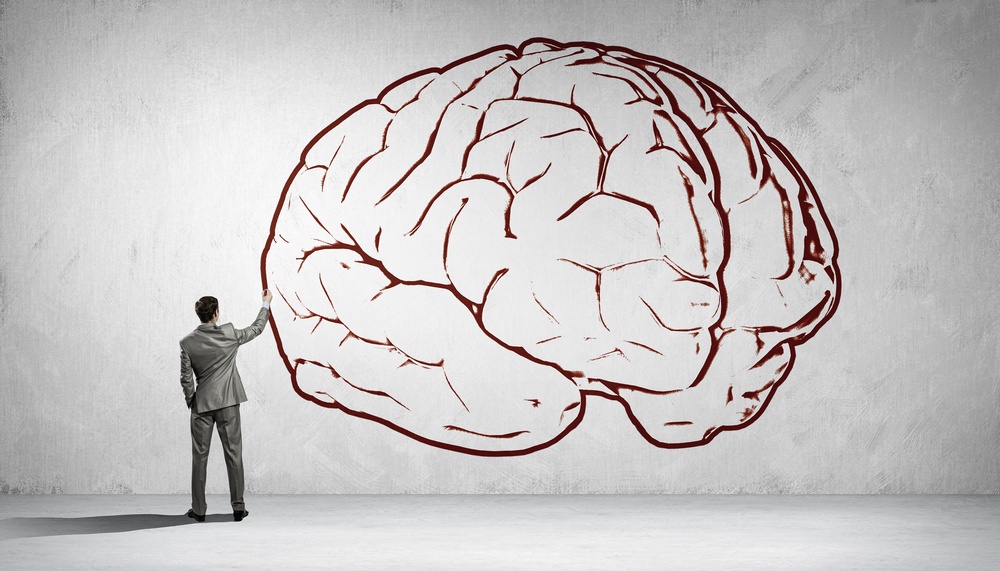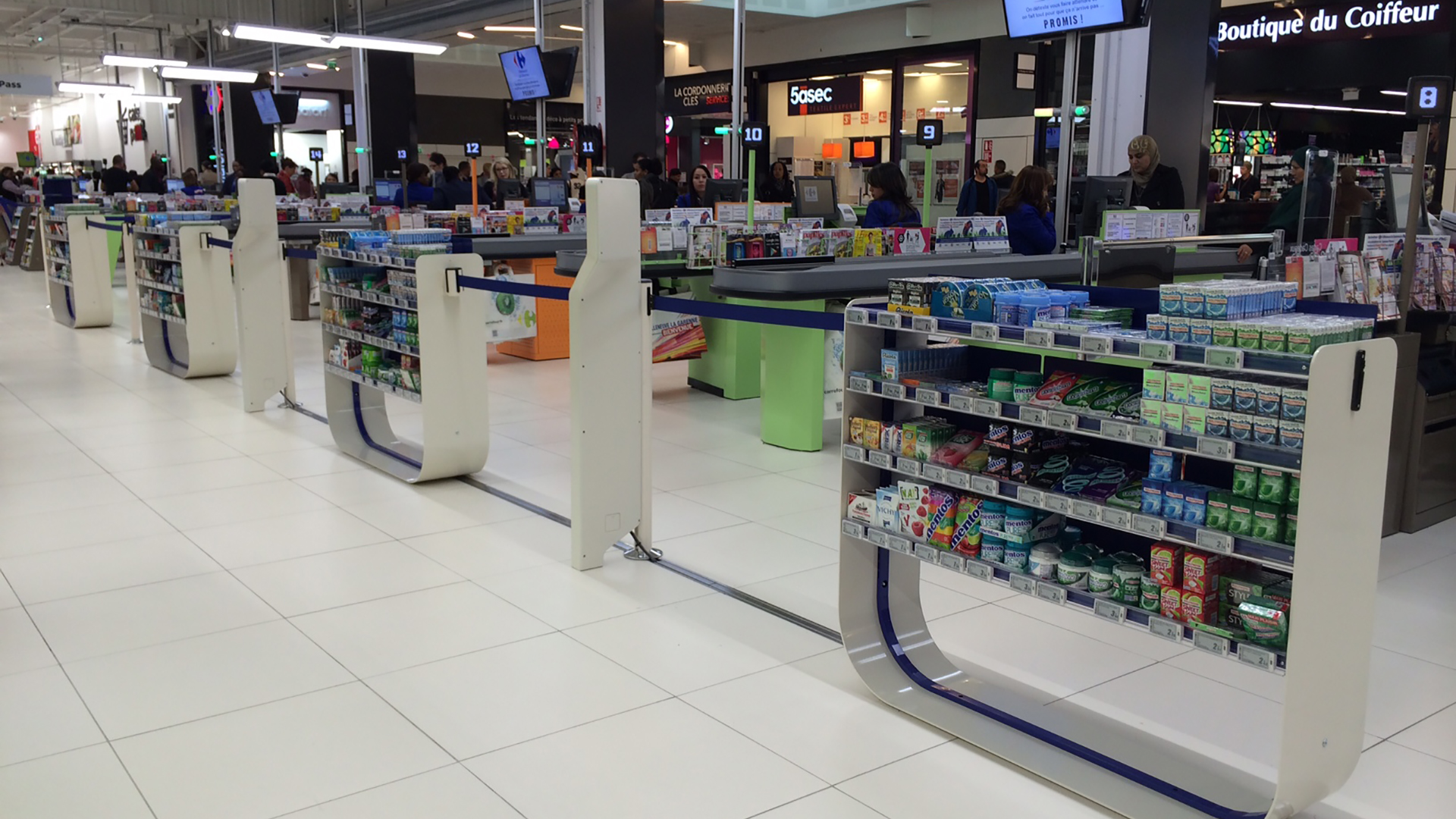- Home
- Sectors
- Solutions
- Tensabarrier®
- Tensator® Charging Stations
- Tensamedia® Wayfinding and Signage
- Lawrence® Post & Rope
- Tensator® Airport Passenger Guidance System
- Electronic Queuing – eQ™
- Tensaguide® Modular Barrier System
- Tensator Micam Protection – TMP
- Safety Solutions
- Access Control
- In-Queue Merchandising
- Holographic Virtual Assistant
- Virtual Queuing – VQMS
- Custom & Bespoke Solutions
- Resources
- About
- Contact Us
- Shop
 English (English)
English (English)
08
Dec

British retailers are losing out on over £1 billion a year because of long queues at the checkout, according to research by mobile operator EE. An option to reduce queues and in-turn increase revenue is to deploy a profitable queue management system. Customers waiting in a queue are in a unique state as they are effectively captive. This “imprisonment” can have a very negative impact on shoppers. However, if correctly managed, the queue gives the service provider the opportunity to drive value from increased sales revenue and reduced costs. The knock-on effects of a profitable retail queue management system are that waiting times are reduced and the customer’s negative experience is eliminated.
There are 3 main benefits as to why a retailer would use a profitable queue management system
1). Customer satisfaction
The queue experience is particularly powerful in colouring customer satisfaction levels because it is the last touch point a retailer has with a customer. The key to making the consumer’s queuing experience positive is to provide a system that is fair, fast, simple and relaxing. Customers are happier when they are distracted and believe that their patience will pay off and like to be given signs of hope. Single line queuing is preferable for customers as it makes the queue look as though it is moving faster, even if it may not be. According to Popular Mechanics, without signs displaying wait time, people will overestimate the time by 23%.
Tensator’s InQ-TV and electronic queuing systems have a dual purpose in that they can provide wait times throughout the queue as well as offering entertainment as a distraction and enabling further promotional opportunities.
2). Cost reduction
An effective queuing system can speed customer flow by up to 25% depending on the number of service positions and the store layout. This increase in system capacity allows staff to be redeployed or customer wait times reduced.
Tensator®’s Single Line Electronic Call Forward System (ECF) serves customers in the order that they queue; increasing efficiencies and helping to manage the distribution of waiting customers to service positions. There is a manual call forward queuing system as well as an auto call forward queuing system. Studies have shown that queue efficiency tends to slow once more than four or five service positions are employed. This is because the customer at the head of the queue becomes hesitant as to which is the next available service position. The ECF system is a great addition to any profitable queue management system, as it helps to speed the queue and ultimately reduce costs.
Another benefit to the ECF system is to prevent employee theft such as ‘sweethearting’. This is when an employee identifies a ‘sweetheart’ customer, generally a friend, family member or colleague, and does not fully process the transaction. The ECF system prevents these acts by removing the employee’s choice of their ‘sweetheart’ customer in the single line queue. In 2015, employee theft accounted for 43% of lost revenue for retailers, amounting to around $18 billion.
3). Sales generation
Effective queue management systems can drive a dramatic increase in sales for a retailer. This is achieved in two distinct ways:
Walkaway reduction
Surprisingly, many retailers do not appear to measure their walkaways, yet the cost in lost revenue can be massive. Queue frustration and wait time are the main causes of walkaways which can be reduced with queue management system.
Impulse sales
The queue, not the checkout, is the best impulse buy location in a retail store. This is because there is a natural dwell time inherent in a queue environment. The increase in sales that can be generated by a well-executed queue-merchandising program is remarkable.
In-Queue Merchandising turns the queue into a revenue-generating exercise and helps to bolster impulse sales. Allowing queue users to browse within the queue provides an excellent distraction and helps to reduce the perceived waiting time. Retailers such as WH Smith in the UK and Staples in the US have reported sales uplifts of between 400% and 1000% for items merchandised in the queue.
InQ-TV, Electronic Call Forward Systems and In-Queue Merchandising are just three examples of potential components that can be used in order to create a profitable queue management system. At Tensator®, we appreciate that every store is different therefore we offer a consultative approach to help deduce which retail queue management system(s) are best for your store. To find out more information about profitable queue management systems, please feel free to download our guide. You can do so by clicking on the banner below.


 Psychology of queuing – what are customers thinking about whilst queuing?
Psychology of queuing – what are customers thinking about whilst queuing?  eQ™ Single Line Queuing – Auto Call Forward">
eQ™ Single Line Queuing – Auto Call Forward">
 Retail
Retail 


